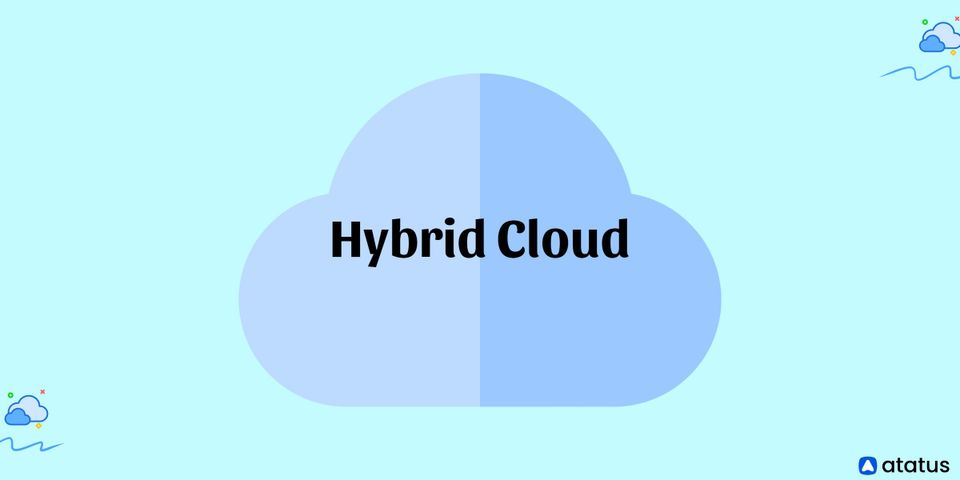To deal with massive data, several big corporations are now embracing Hadoop in their organizations. Hadoop is based on the Google-invented MapReduce Programming Algorithm. It's a Java framework for managing and storing massive amounts of data on a large cluster of commodity hardware.
We will cover the following:
- What is Hadoop?
- Components of Hadoop Architecture
- Hadoop Architecture Explained
- Benefits of Hadoop Architecture
- Challenges in Hadoop Architecture
What is Hadoop?
Hadoop is an open-source framework developed by Apache for storing, processing, and analysing large amounts of data. Hadoop is a Java-based data warehouse that is not an OLAP (online analytical processing) system. It's a batch/offline processing system. Facebook, Yahoo, Google, Twitter, LinkedIn, and plenty of other companies use it. It may also be scaled up by simply adding nodes to the cluster.
It is the most popular software for handling large data among data analysts, and its market share is growing.
Understanding Hadoop requires a deeper examination of how it differs from traditional databases. Hadoop divides enormous data volumes into manageable smaller parts using the HDFS (Hadoop Data File System), which is then saved on clusters of community servers. This provides scalability and cost savings.
Hadoop also uses MapReduce to perform parallel processing, which allows it to store and retrieve data much faster than a traditional database. Traditional databases are useful for dealing with predictable and consistent workflows; otherwise, Hadoop's scalable infrastructure is required.
Components of Hadoop Architecture
The Hadoop Architecture is made up of 4 main components:
#1 MapReduce
MapReduce is nothing more than an Algorithm or a Data Structure built on the YARN framework. MapReduce's main characteristic is that it performs distributed processing in parallel in a Hadoop cluster, which is what makes Hadoop so fast. Serial processing is no longer useful when dealing with Big Data.
MapReduce consists mostly of two tasks, each of which is separated into phases:
- The Map() function converts DataBlocks into Tuples, which are just key-value pairs. These key-value pairs are now passed to the Reduce() function.
- The Reduce() function then joins these broken Tuples or key-value pairs based on their Key value and creates a set of Tuples, and performs operations such as sorting, summing, and so on, before sending them to the final Output Node.
#2 Hadoop Distributed File System (HDFS)
In a Hadoop cluster, HDFS (Hadoop Distributed File System) is used for storage authorization. It's primarily intended for use with commodity hardware and a distributed file system design. HDFS is built in such a way that it prioritizes storing data in huge chunks of blocks over storing little data blocks.
Hadoop's HDFS provides fault tolerance and high availability to the storage layer as well as the other devices in the cluster. HDFS data storage nodes are:
- NameNode
In a Hadoop cluster, the NameNode serves as the Master, guiding the Datanode. Namenode is mostly used to store Metadata, or data about data. The transaction logs that maintain track of the user's activities in a Hadoop cluster are a form of metadata. It can also be the file name, size, and information about the DataNode's location (Block number or ids) that Namenode holds in order to find the closest DataNode for faster communication. - DataNode
DataNodes, which function as slaves DataNodes, are primarily used to store data in a Hadoop cluster; the number of DataNodes can range from one to 500 or even more. The Hadoop cluster will be able to store more data as the number of DataNodes when it increases. As a result, it is recommended that the DataNode have a sufficient storage capacity in order to hold a large number of file blocks.
#3 Yet Another Resource Negotiator (YARN)
MapReduce is based on the YARN Framework. Job scheduling and resource management are two tasks that YARN accomplishes. The goal of job scheduling is to break down a large work into smaller jobs so that each one may be assigned to different slaves in a Hadoop cluster and processing is optimized.
Job Scheduler also maintains track of which jobs are more vital, which jobs have higher priority, job dependencies, and other information such as job timing. Resource Manager is used to managing all of the resources that are made available for a Hadoop cluster to run.
#4 Hadoop Common or Common Utilities
Hadoop common, or Common utilities, are just java library and java files, or java scripts, that we require for all other Hadoop cluster components. HDFS, YARN, and MapReduce all use these tools to run the cluster. Hadoop Common verifies that hardware failure in a Hadoop cluster is common, requiring Hadoop Framework to fix it automatically via software.
Hadoop Architecture Explained
In terms of processing power, networking, and storage, a good Hadoop architecture design requires a number of design considerations. The Hadoop skillset requires meticulous knowledge of every tier in the Hadoop stack, from understanding the numerous components in the Hadoop architecture to establishing a Hadoop cluster, running it, as well as establishing the top chain for data processing.
There are several issues where the more devices used, the greater the risk of hardware failure. HDFS (Hadoop Distributed File System) solves this problem by storing many copies of the data so that in the event of a failure, another copy of the data can be accessed.
Another issue with employing numerous machines is that there must be a single, concise method of merging data using a standard programming model. This is a problem that Hadoop's MapReduce solves. It performs computations over sets of keys and values to read and write data from the machines or discs.
In fact, both HDFS and MapReduce are at the heart of Hadoop's functionality. Hadoop uses HDFS and MapReduce for data storage and distributed data processing, respectively, and follows a master-slave architecture design.
Hadoop is the data storage master node. The NameNode is HDFS, while the Job Tracker is the master node for Hadoop MapReduce parallel data processing. The Hadoop architecture's slave nodes are the Hadoop cluster's other machines that store data and perform sophisticated computations.
A DataNode and a Task Tracker daemon synchronized with the Job Tracker and NameNode on each slave node. The master and slave systems in a Hadoop architectural implementation can be set up in the cloud or on-premise.
Benefits of Hadoop Architecture
Hadoop was designed to deal with large amounts of data, so it's no surprise that it has so many benefits. The following are the five primary benefits:
- Speed
Users may run sophisticated queries in just a few seconds because of Hadoop's concurrent processing, MapReduce model, and HDFS. - Diversity
HDFS, Hadoop's file system, can hold a variety of data forms, including structured, semi-structured, and unstructured data. - Cost-Effective
Hadoop is open-source and stores data on commodity technology, making it much more cost-effective than traditional relational database management systems. - Resilient
HDFS has the ability to replicate data over the network, so if one node goes down or there is some other network issue, Hadoop will use the other copy of data. Data is duplicated three times by default, but the replication factor can be changed. - Scalable
You can quickly add extra servers to Hadoop because it works in a distributed environment.
Challenges in Hadoop Architecture
Despite Hadoop's greatness, it's not all roses and butterflies. Hadoop has its own number of difficulties, such as:
- Security
There's a lot of information out there, and a lot of it is confidential. Hadoop still has to provide suitable identity, data encryption, provisioning, and auditing procedures. - High Learning Curve
If you wish to run a query in Hadoop's file system, you'll have to develop MapReduce functions in Java, which is a complicated process. In addition, the ecosystem is made up of many other components. - Not All Datasets can be Handled the Same
Hadoop does not provide a “one-size-fits-all” benefit. Different components operate in different ways, and you'll need to sort them out through trial and error. - MapReduce is Limited
Although MapReduce is a fantastic programming model, it relies on a file-intensive technique that isn't suited for real-time interactive iterative jobs or data analytics.
Conclusion
Hadoop Architecture is a Big Data technology that is commonly used for storing, processing, and analysing huge datasets. The easiest method to decide whether Hadoop Architecture is right for your company is to calculate the cost of storing and processing data using Hadoop. Also, compare the calculated cost to the cost of using a legacy data management method.
Monitor Your Entire Application with Atatus
Atatus provides a set of performance measurement tools to monitor and improve the performance of your frontend, backends, logs and infrastructure applications in real-time. Our platform can capture millions of performance data points from your applications, allowing you to quickly resolve issues and ensure digital customer experiences.

Atatus can be beneficial to your business, which provides a comprehensive view of your application, including how it works, where performance bottlenecks exist, which users are most impacted, and which errors break your code for your frontend, backend, and infrastructure.



